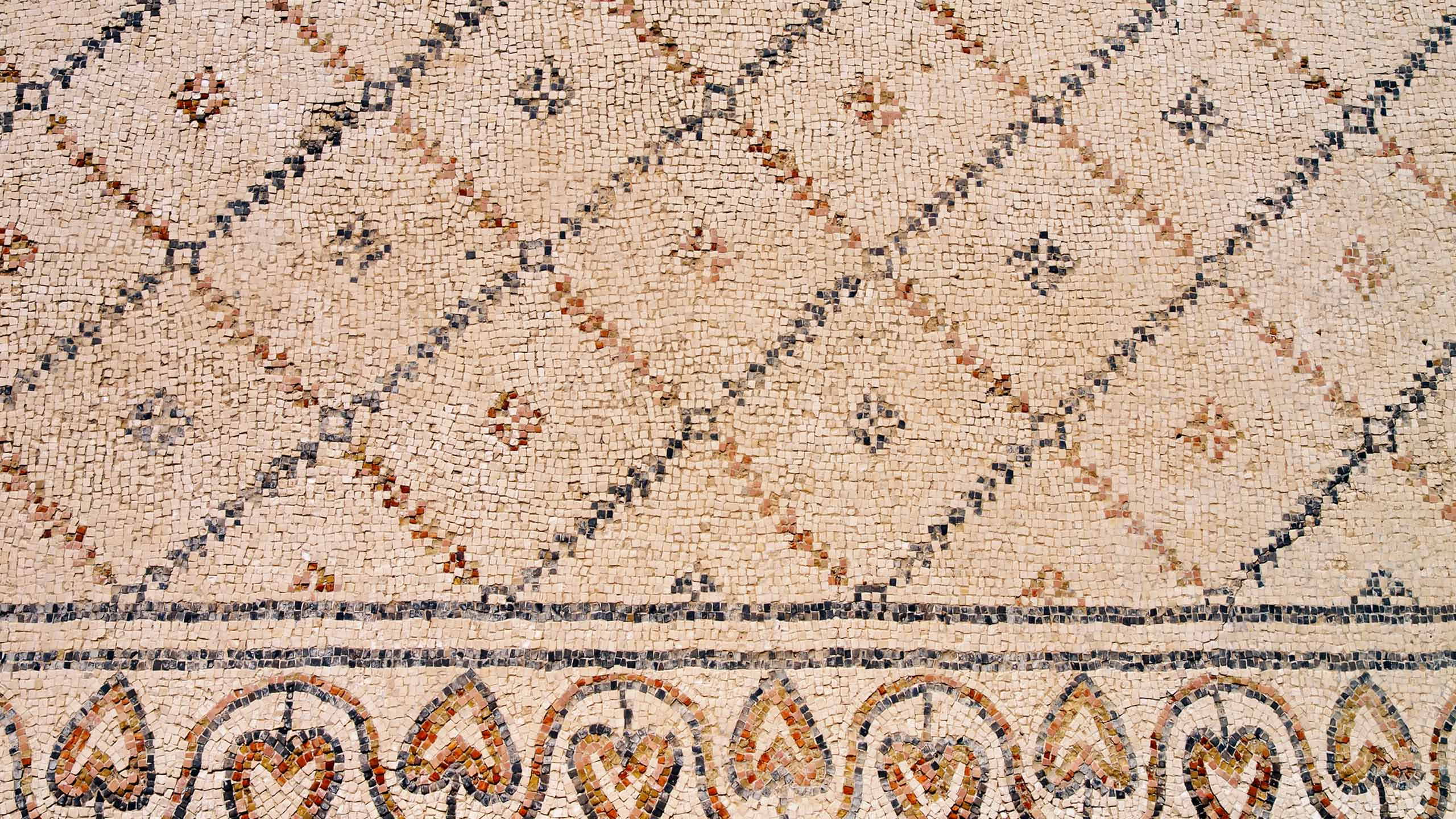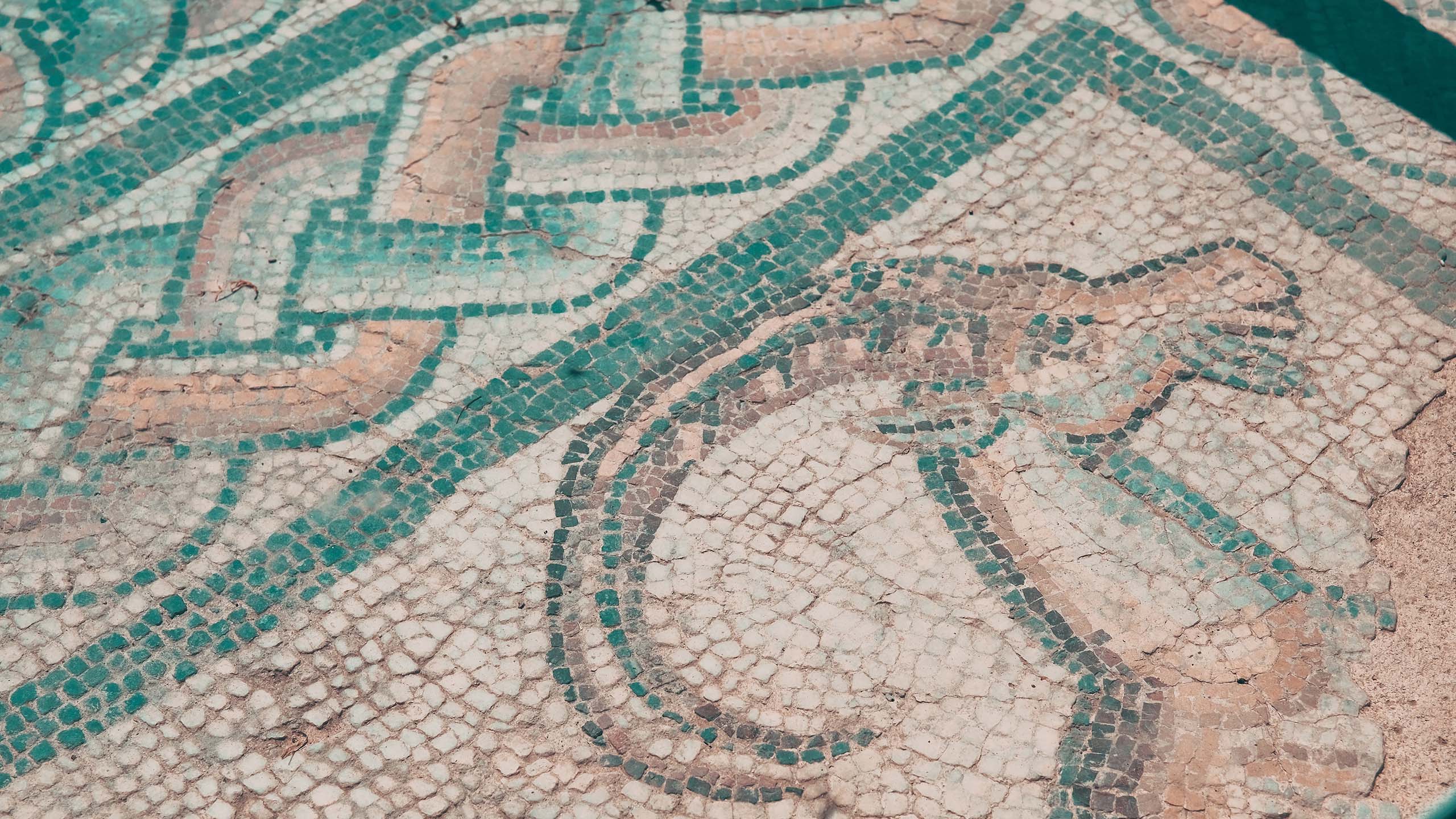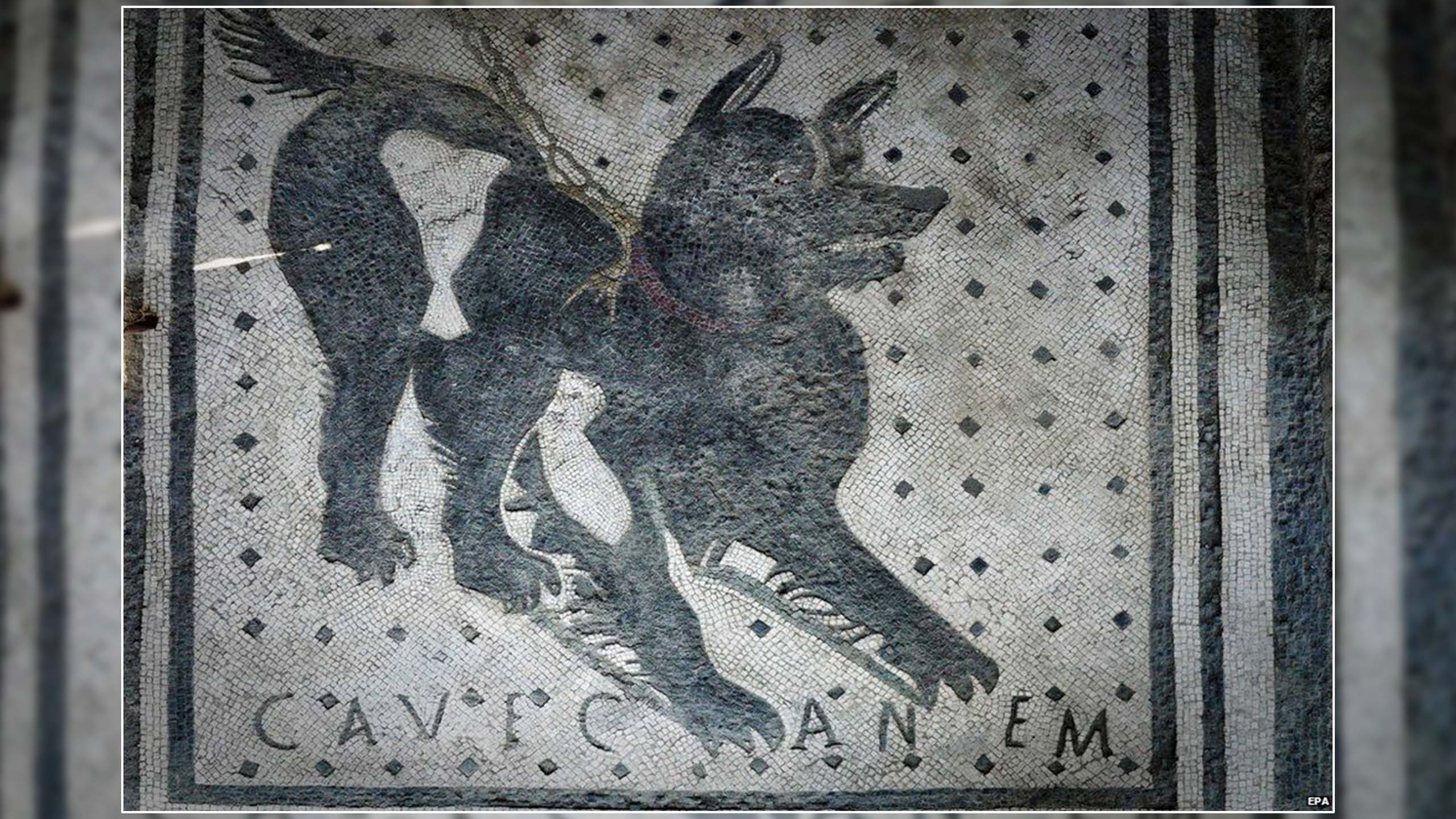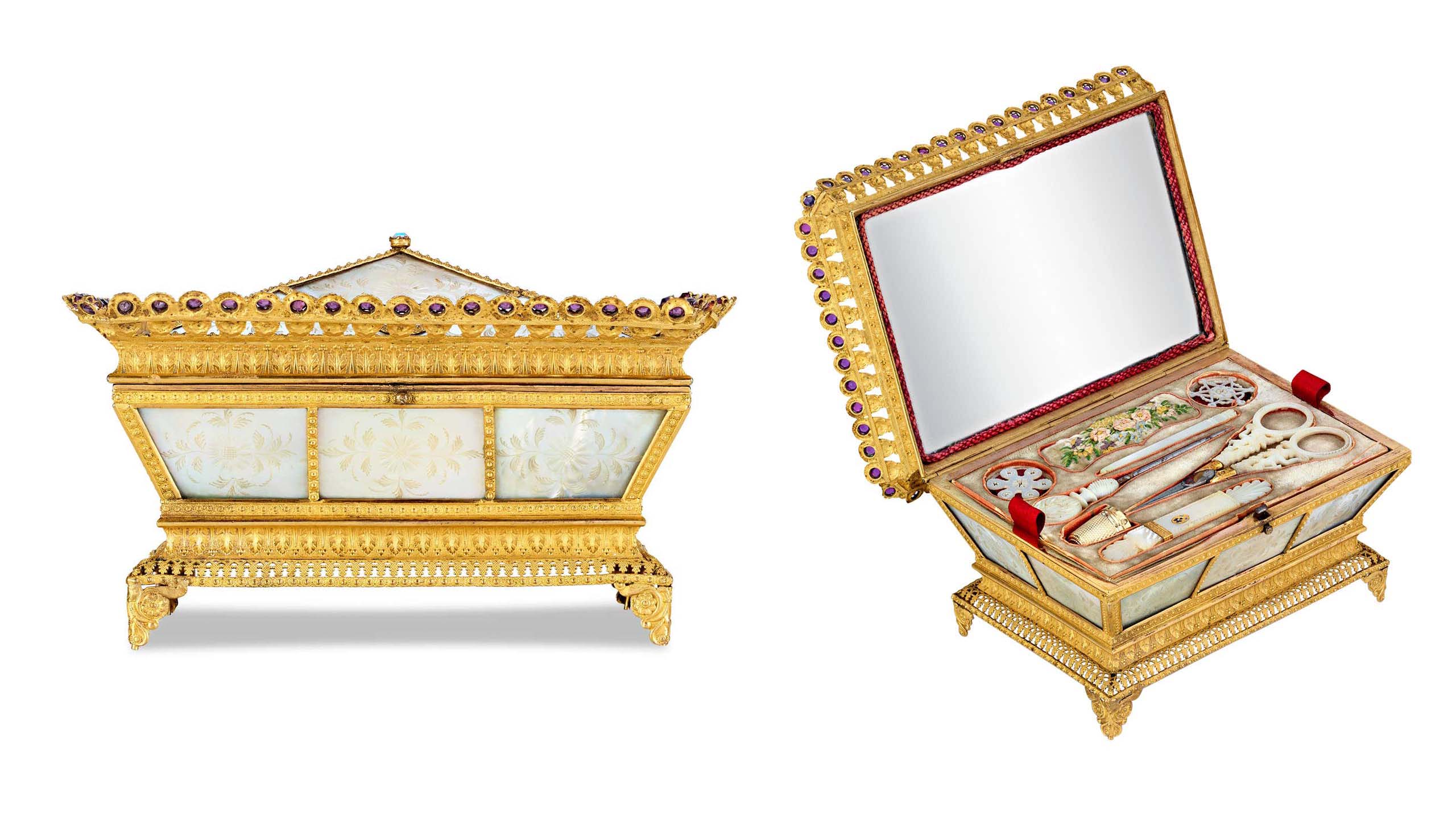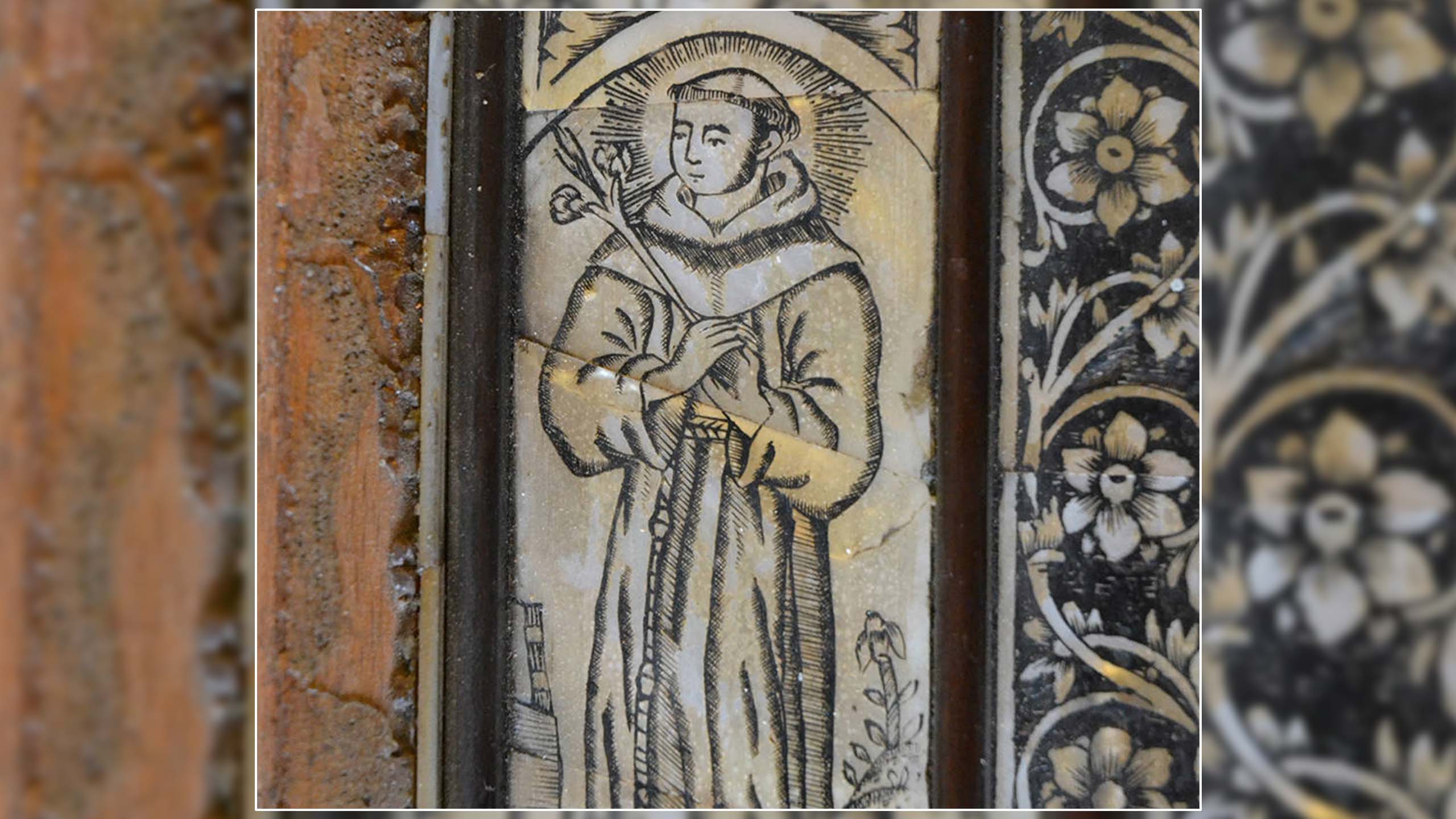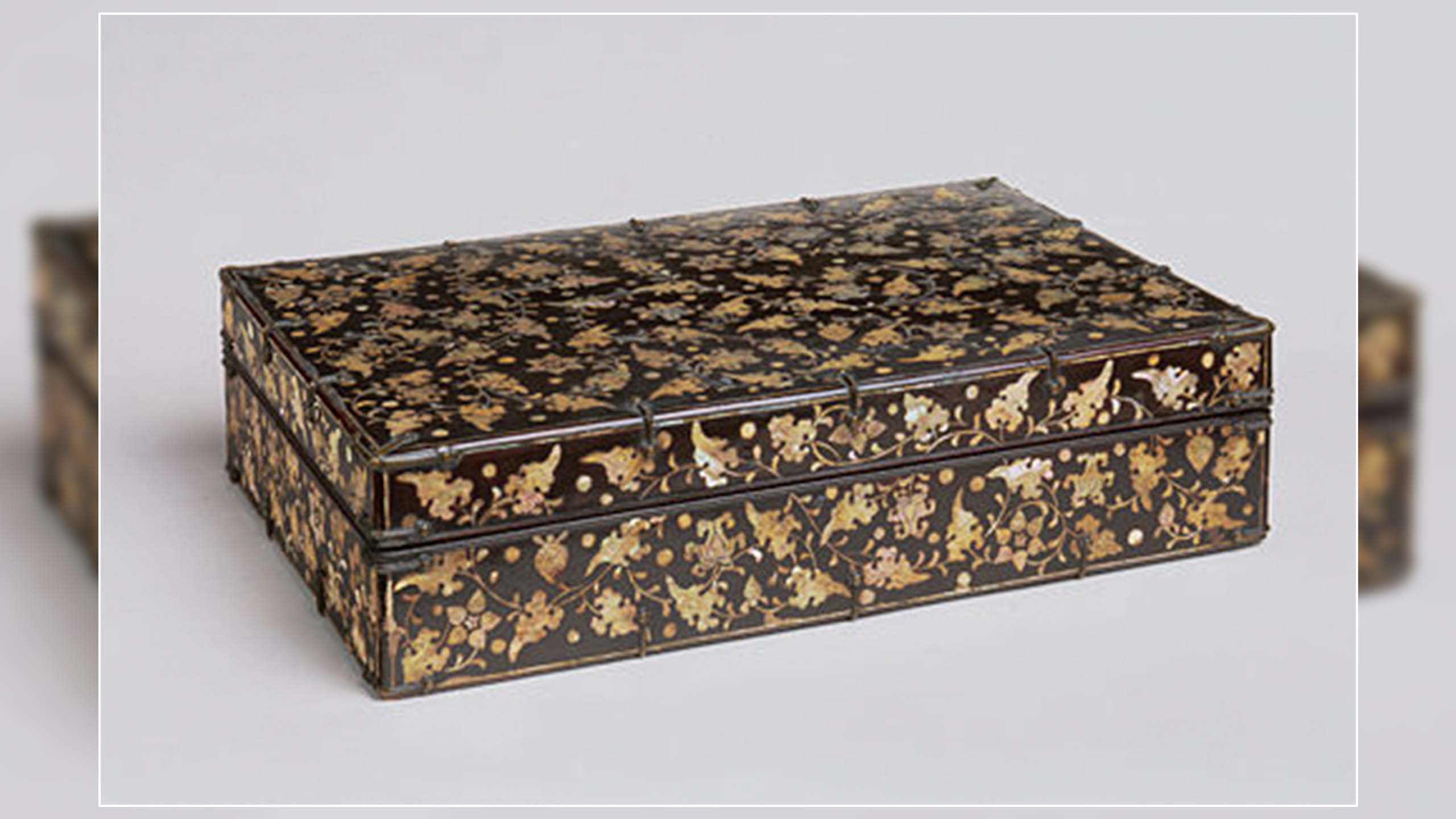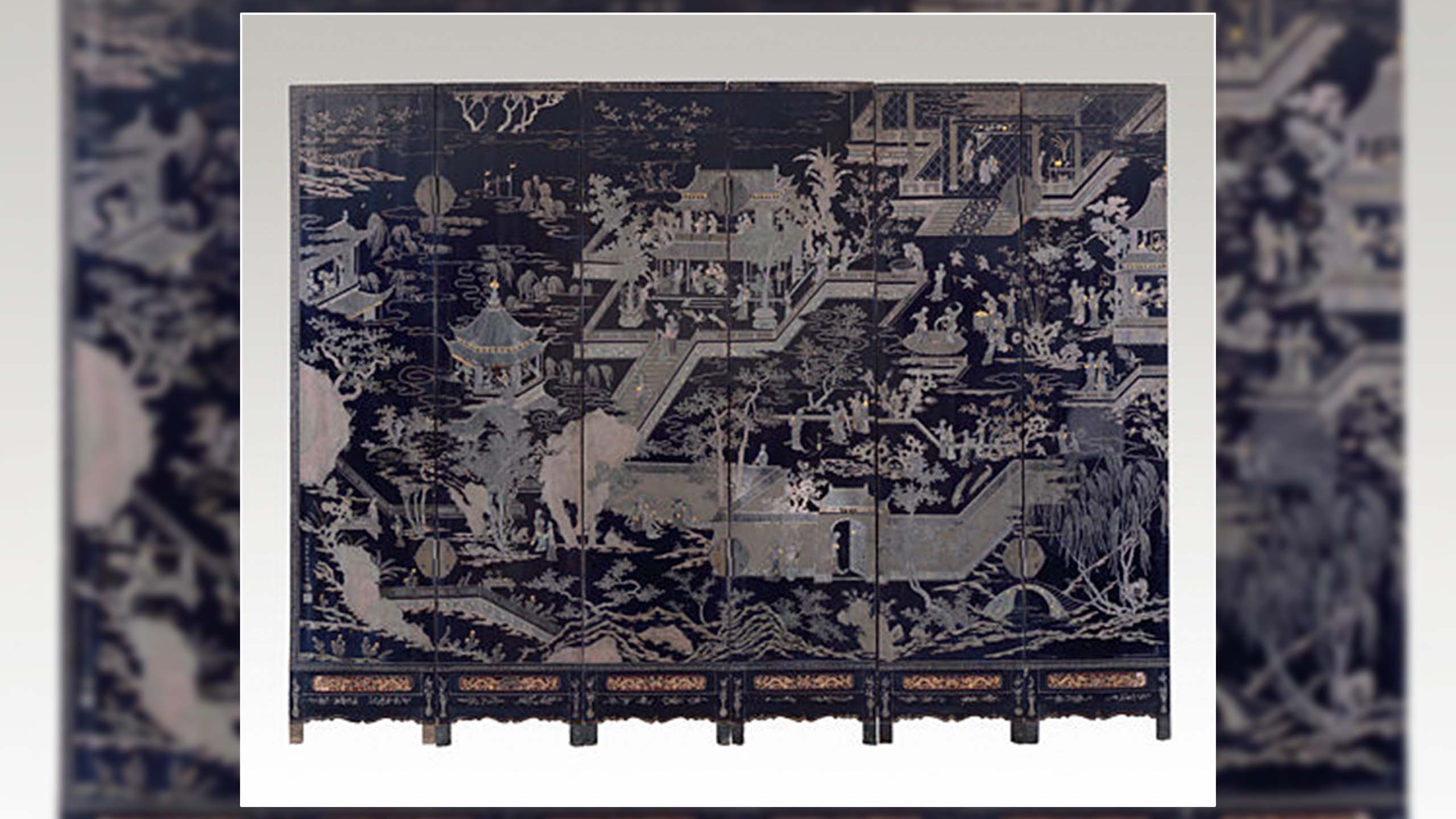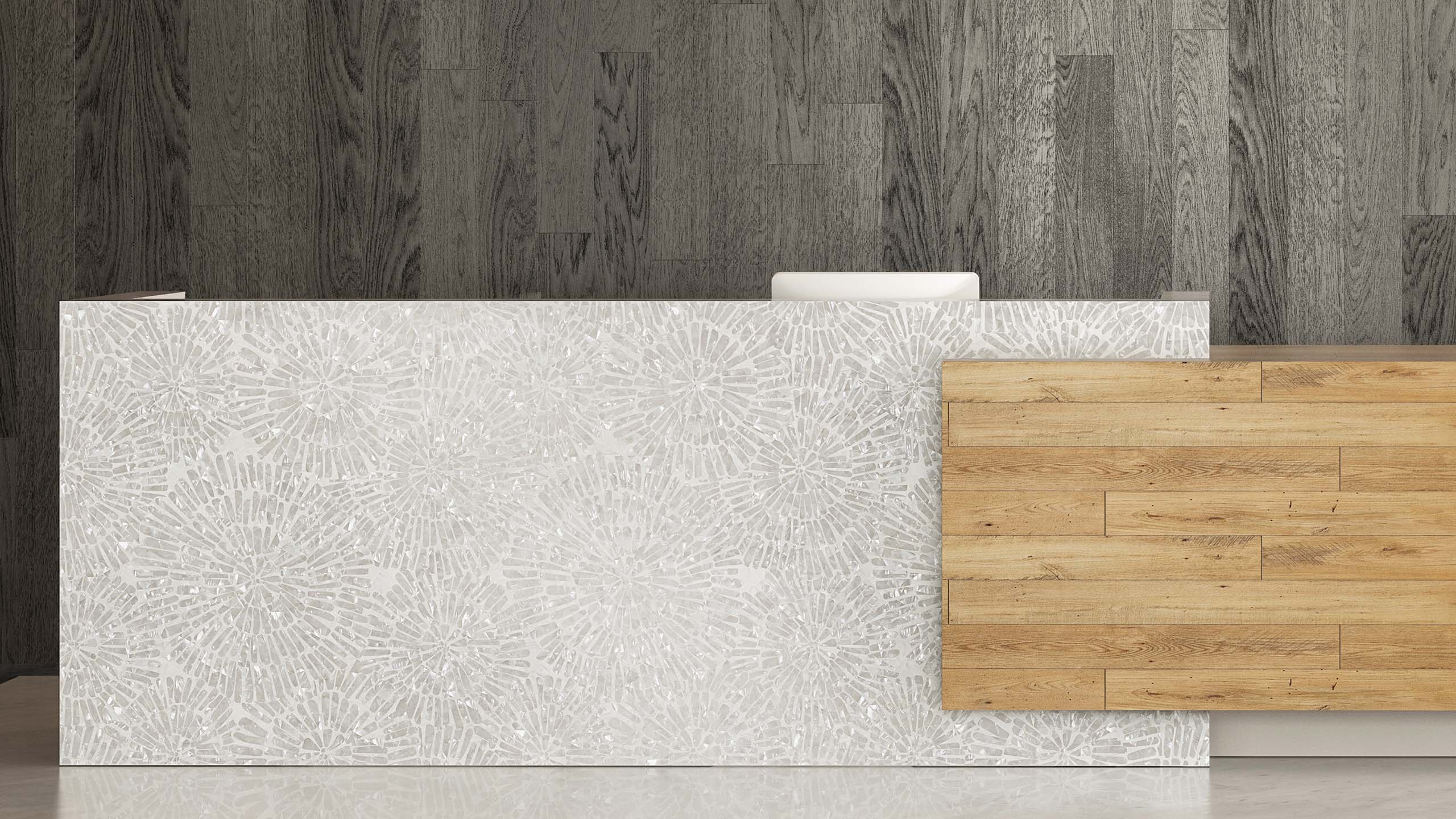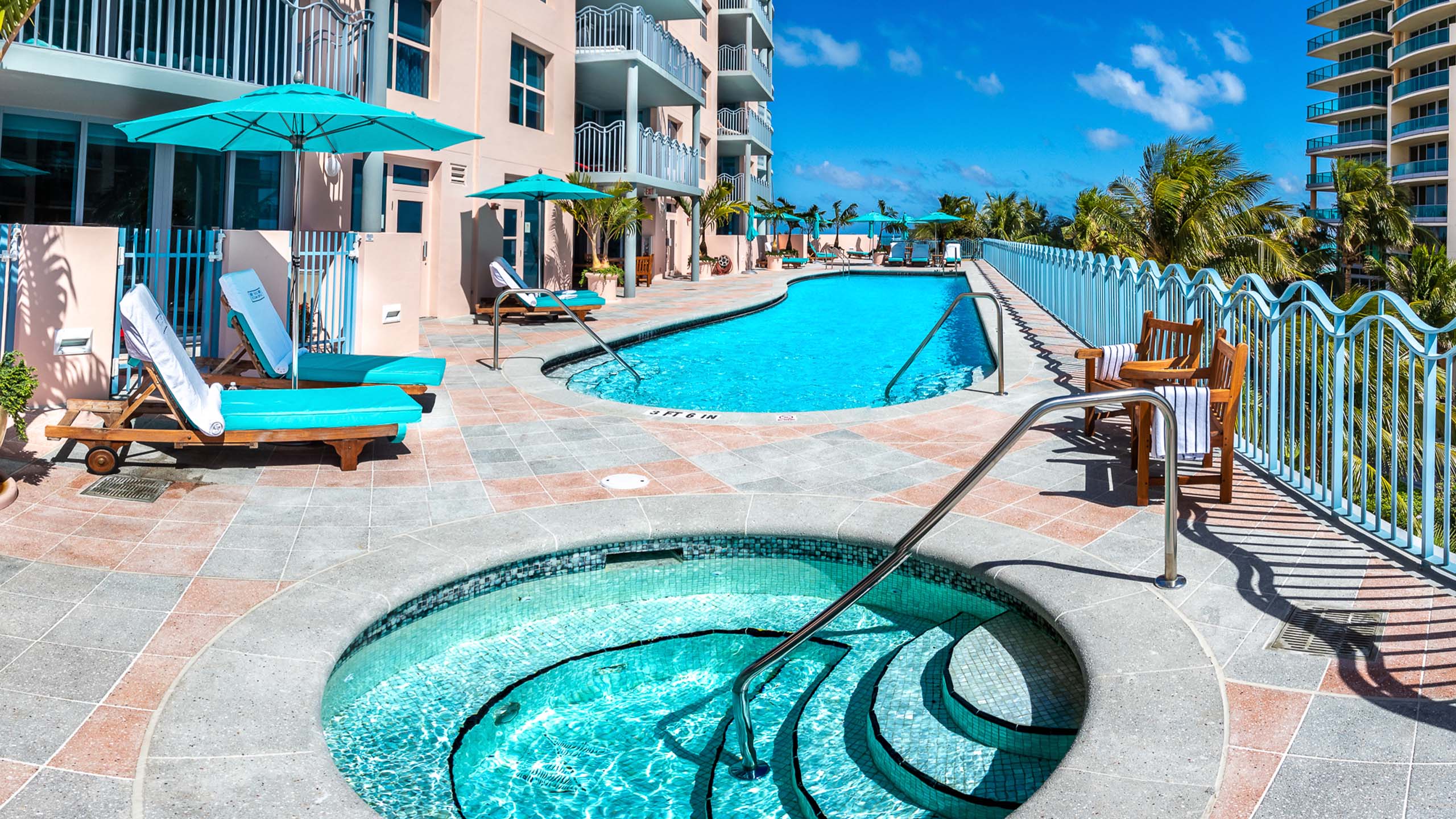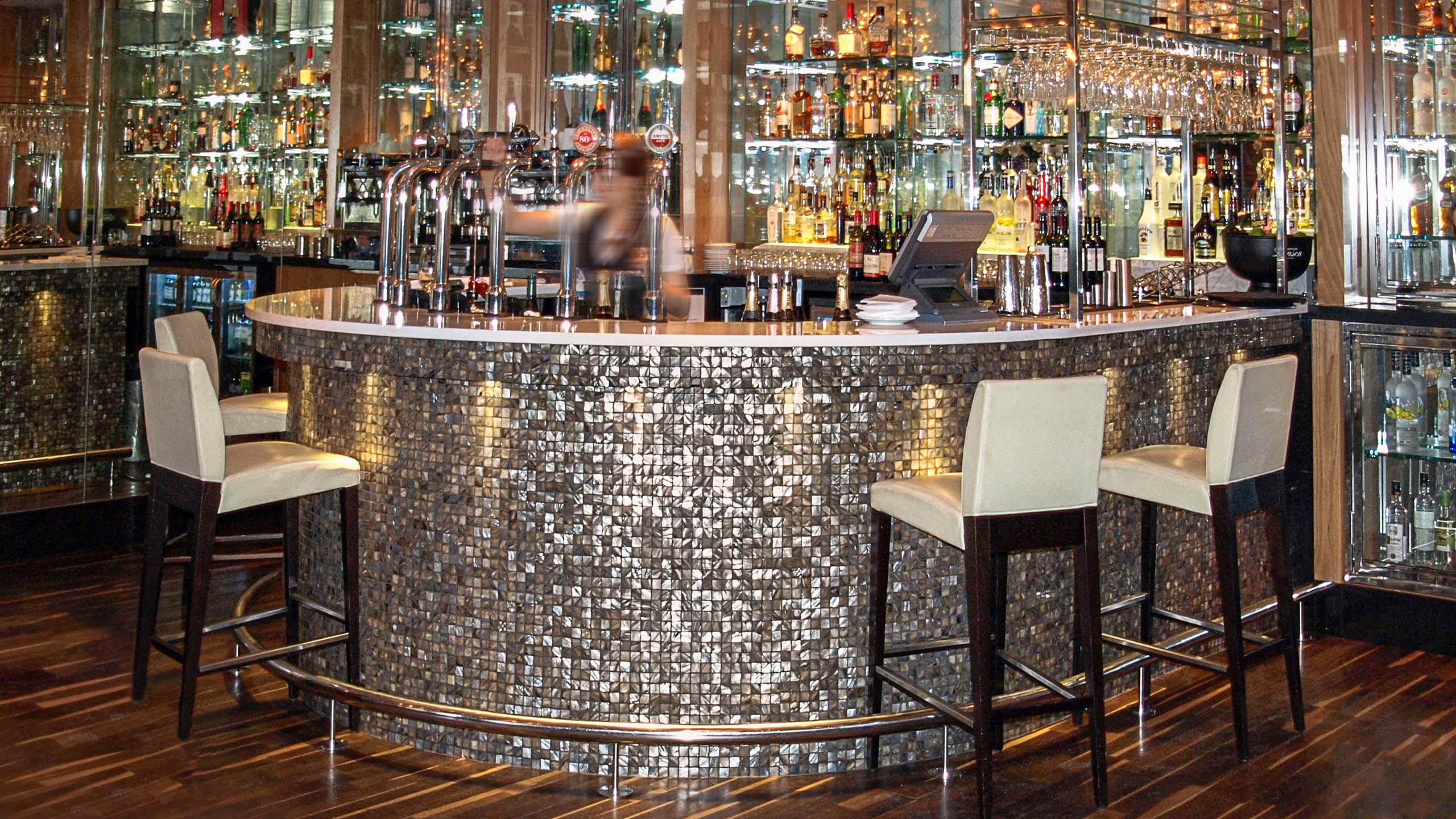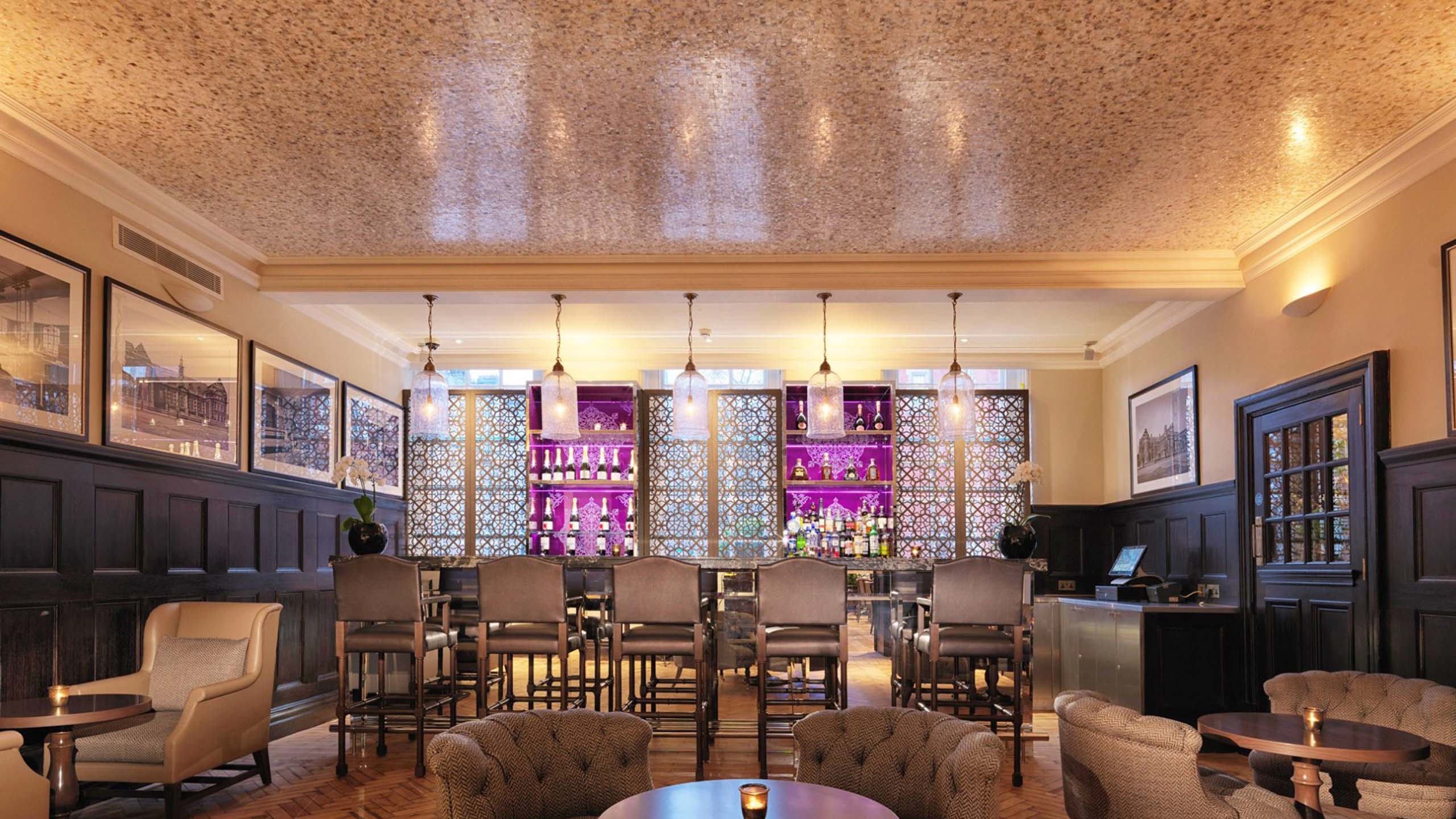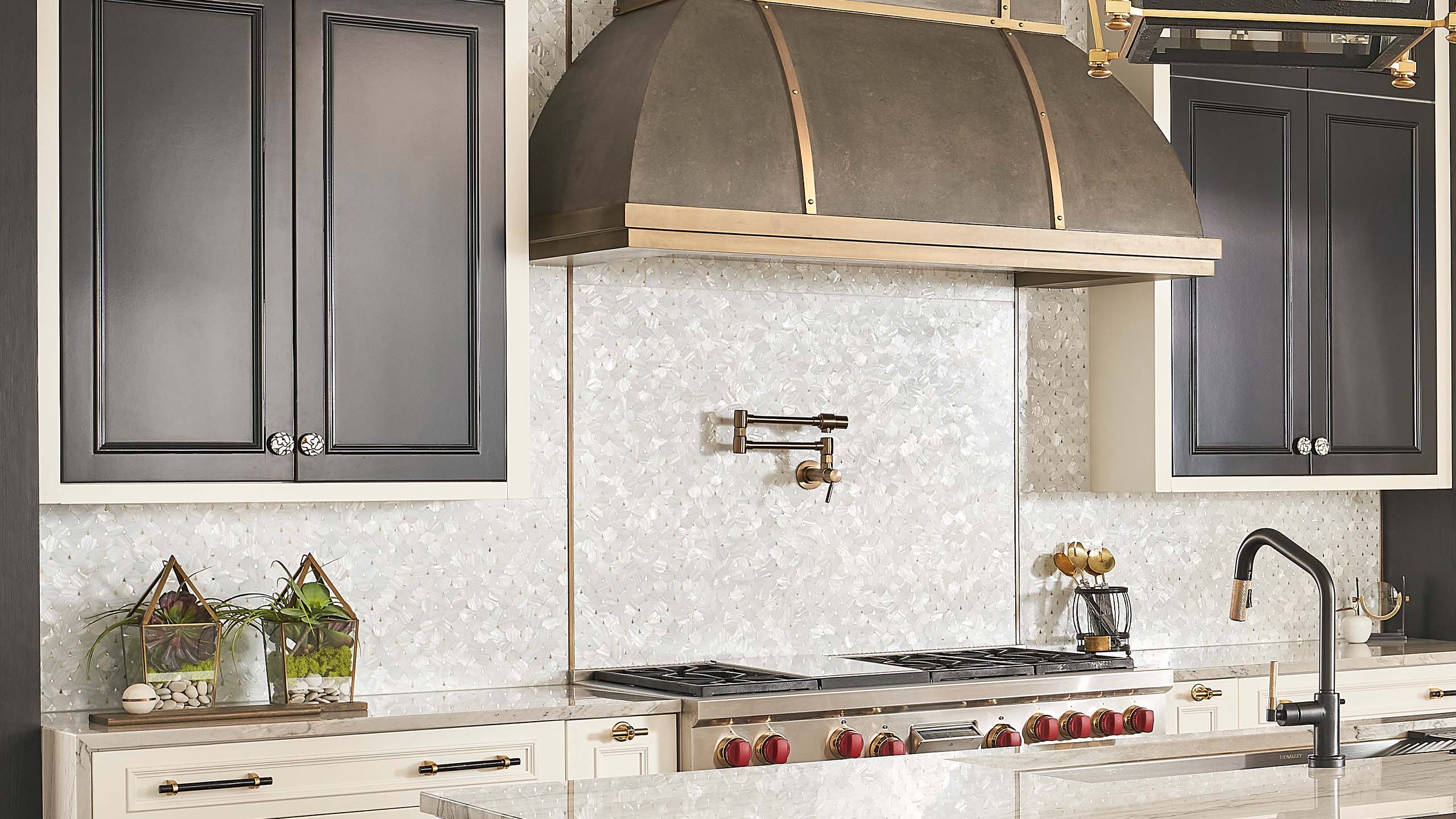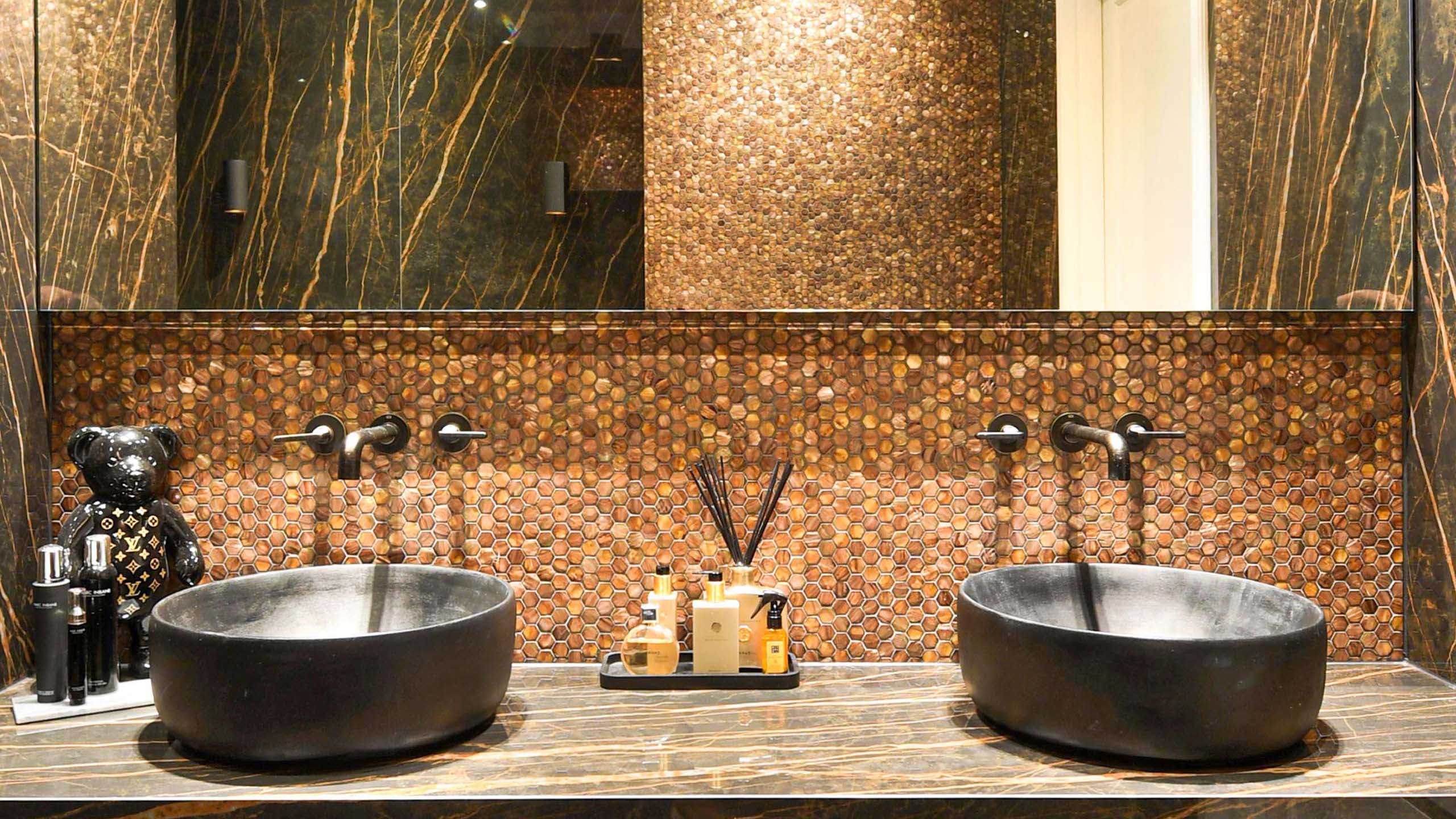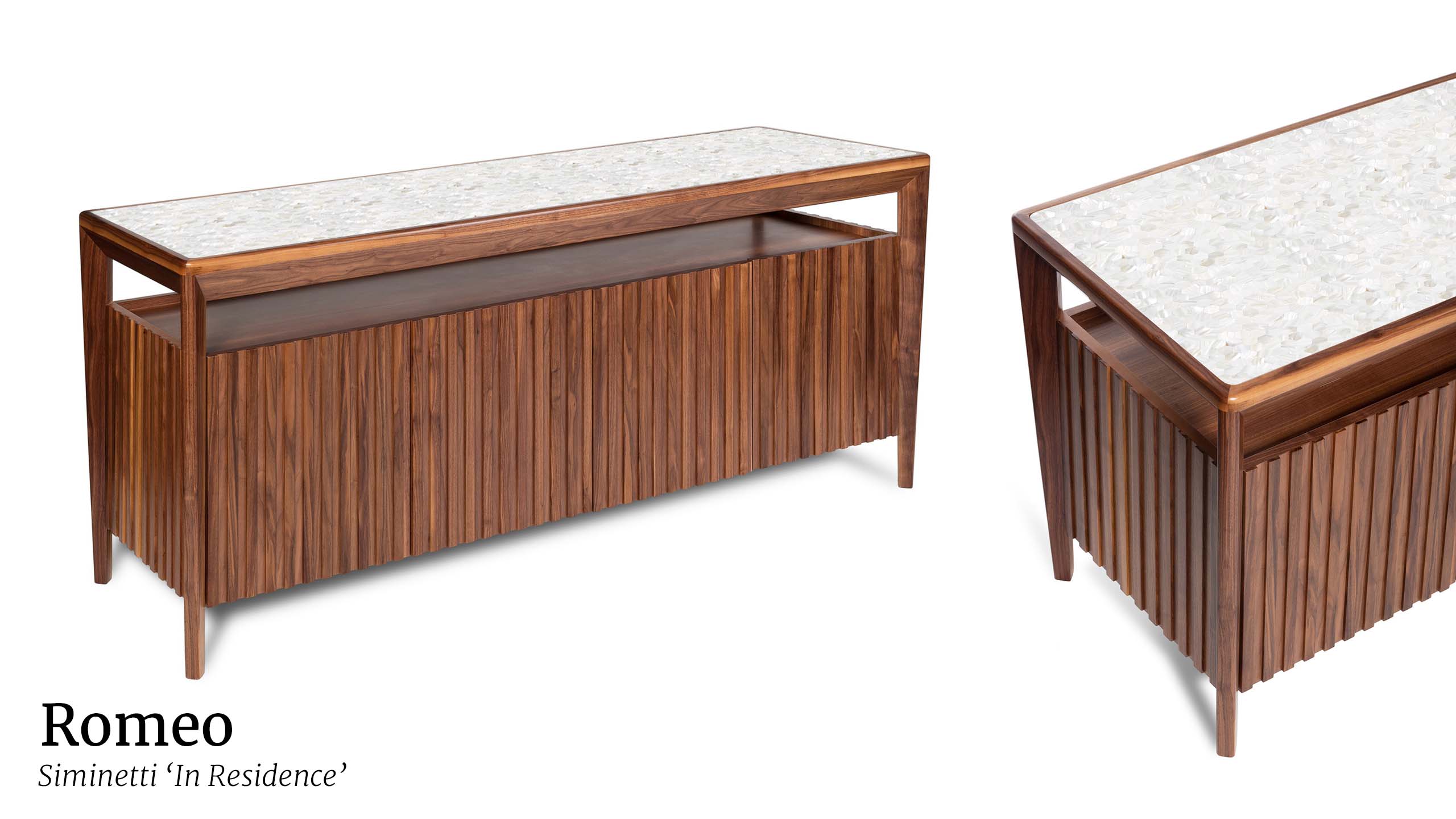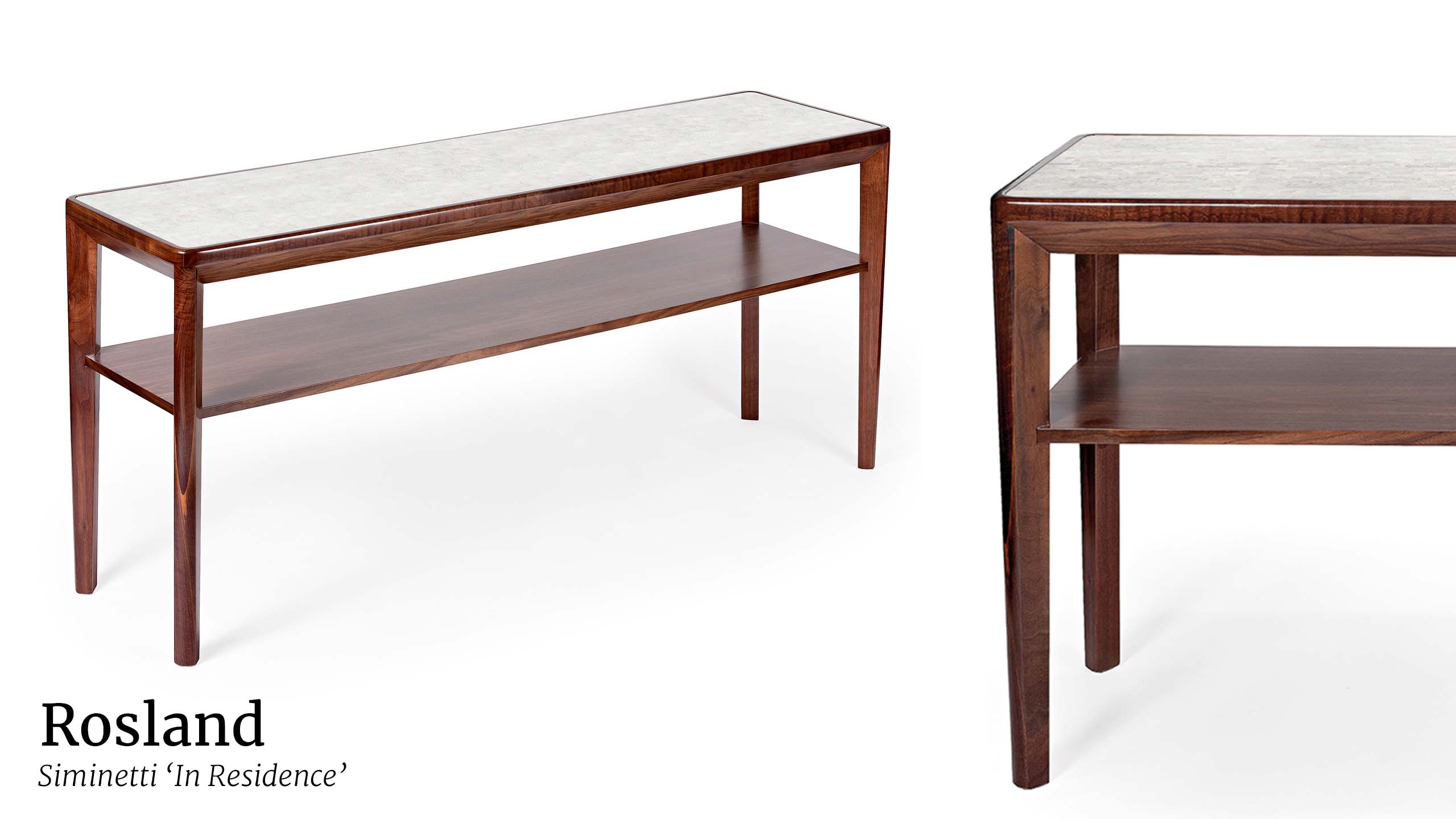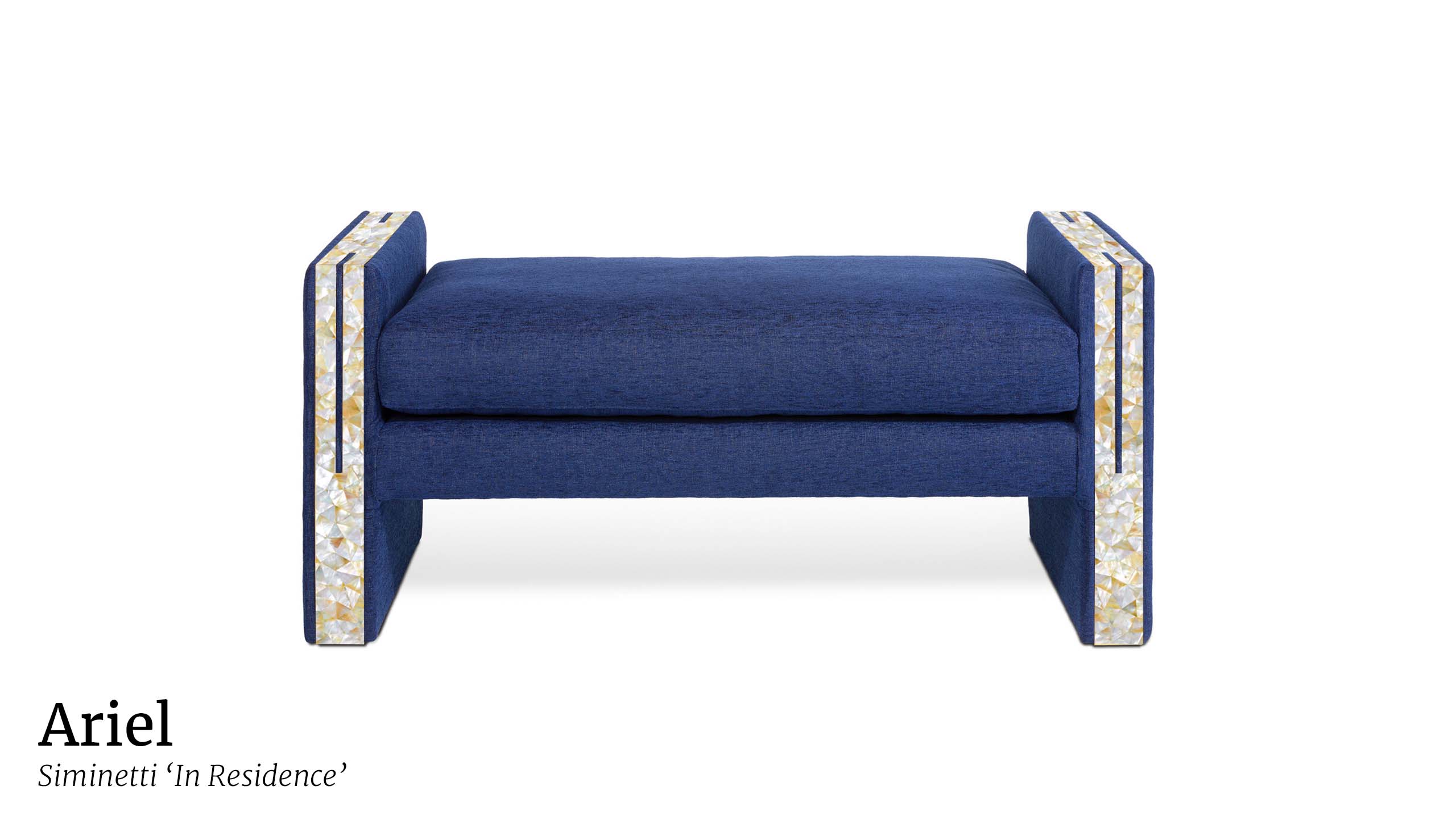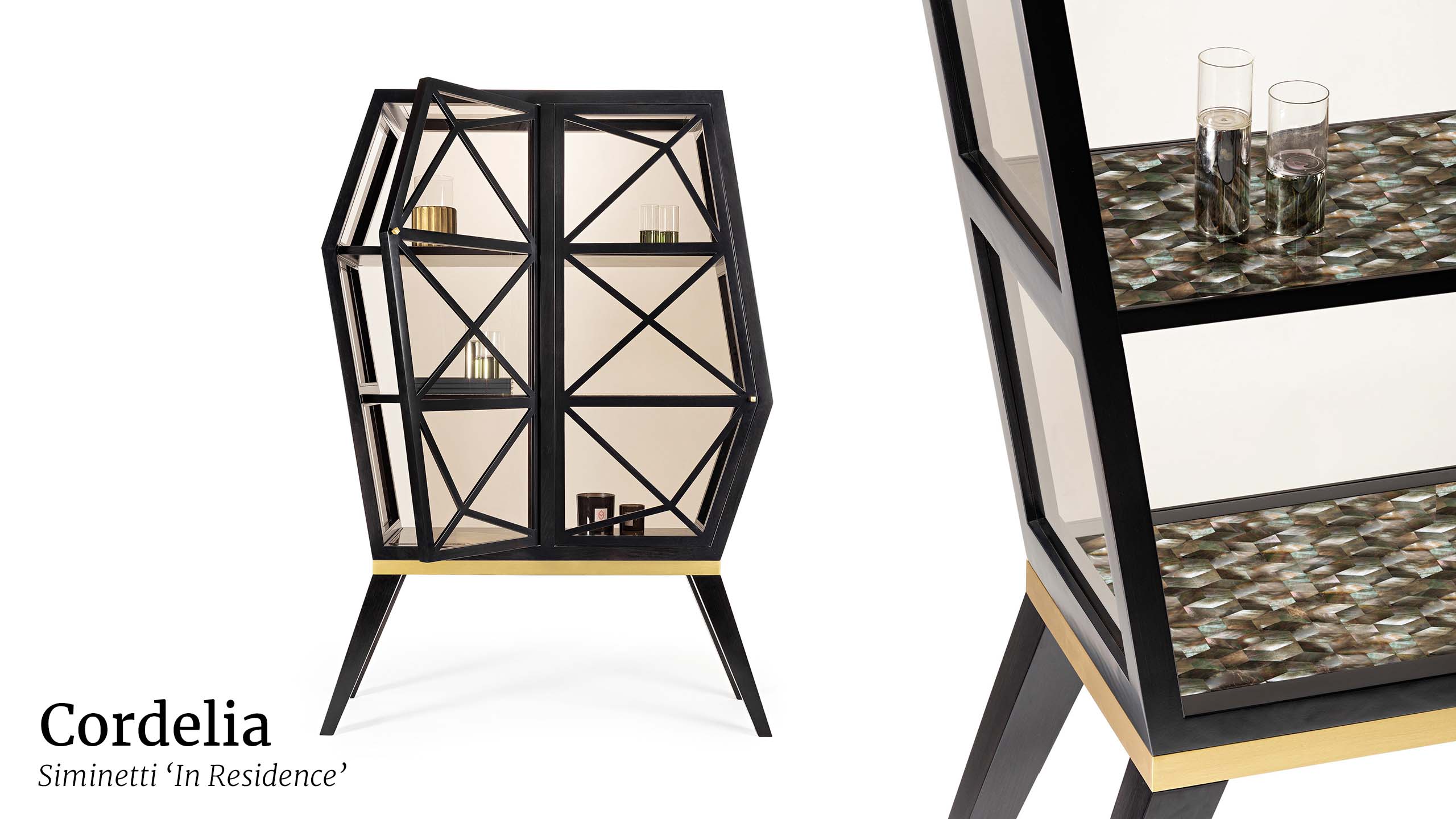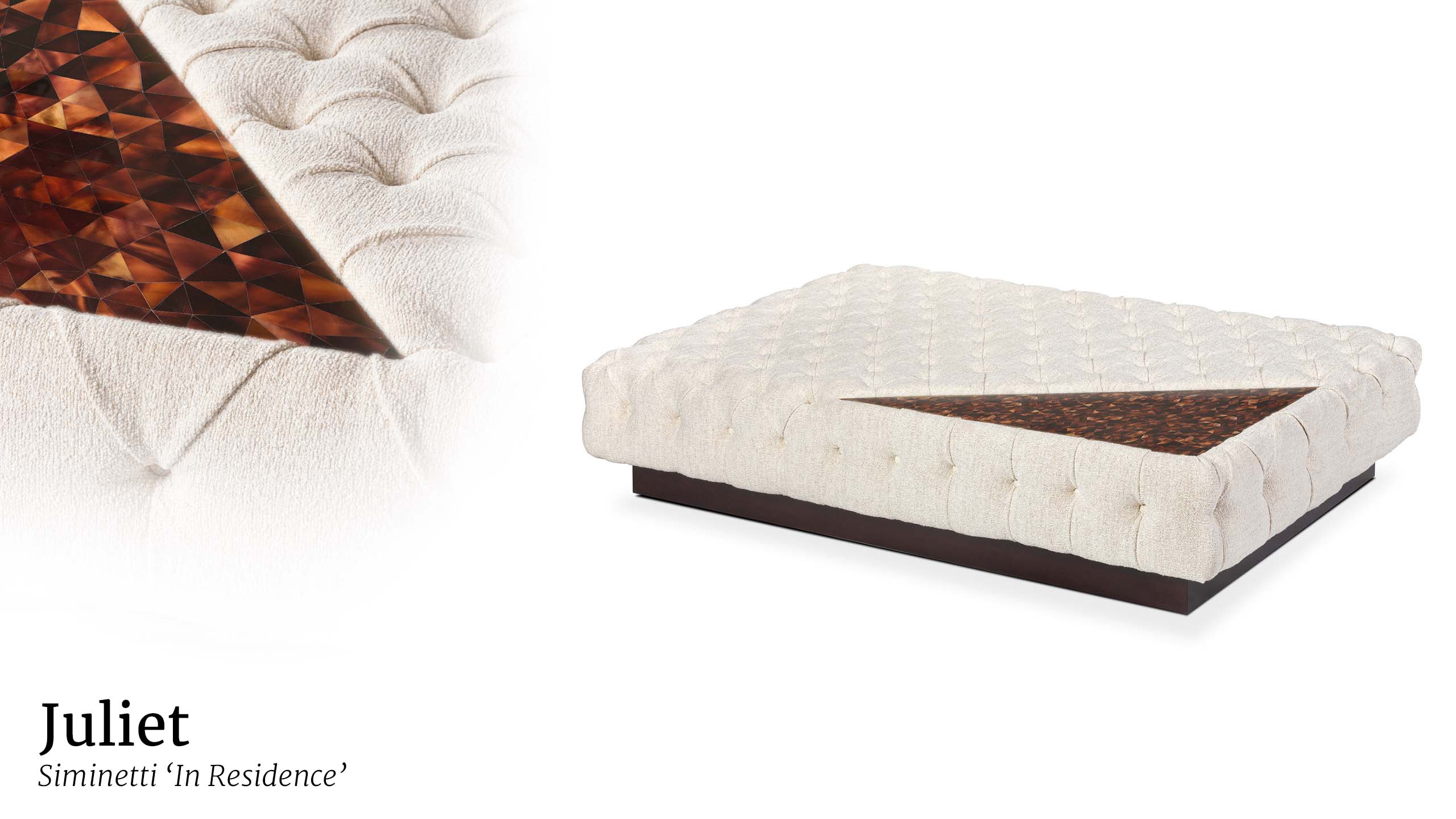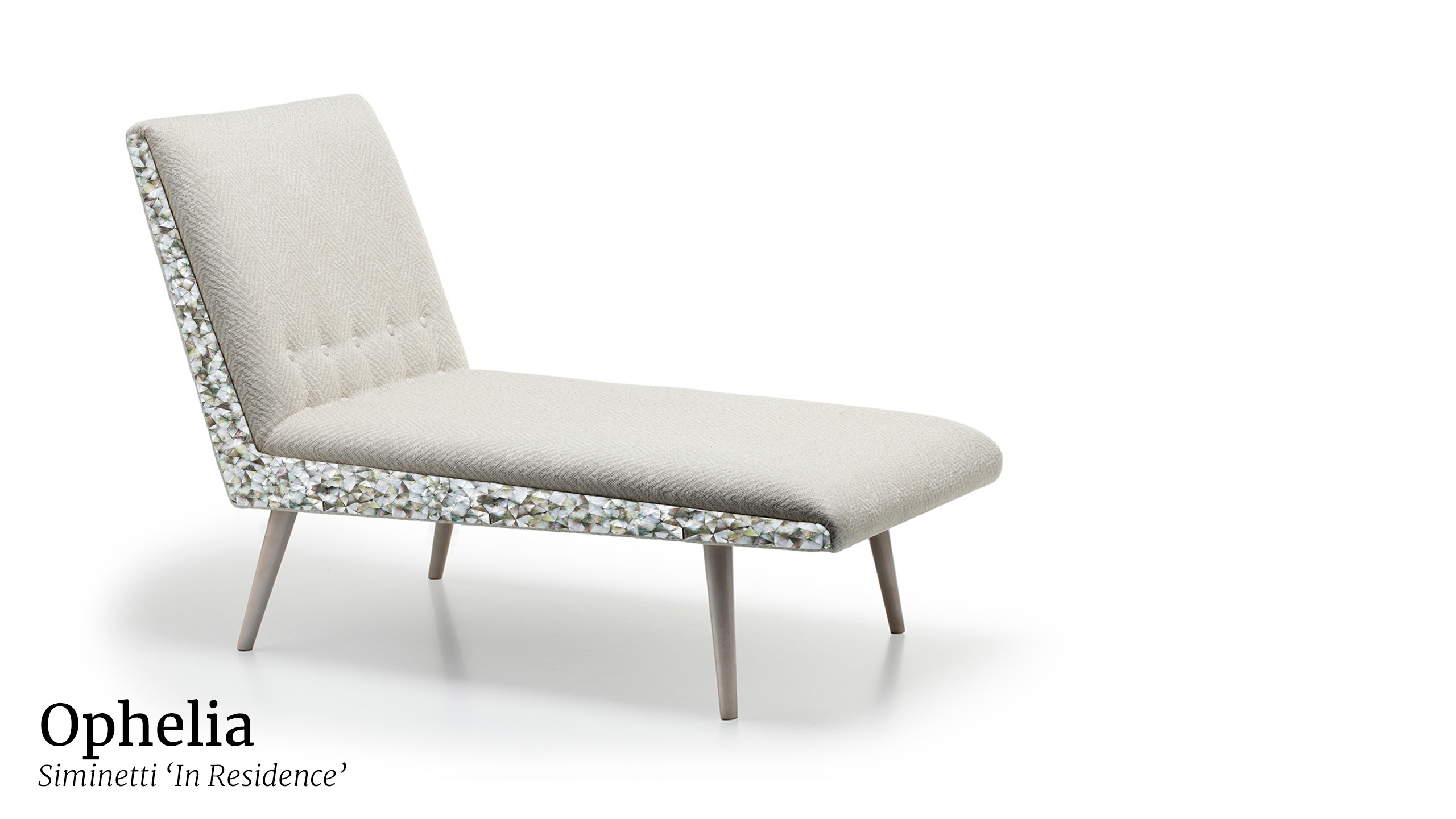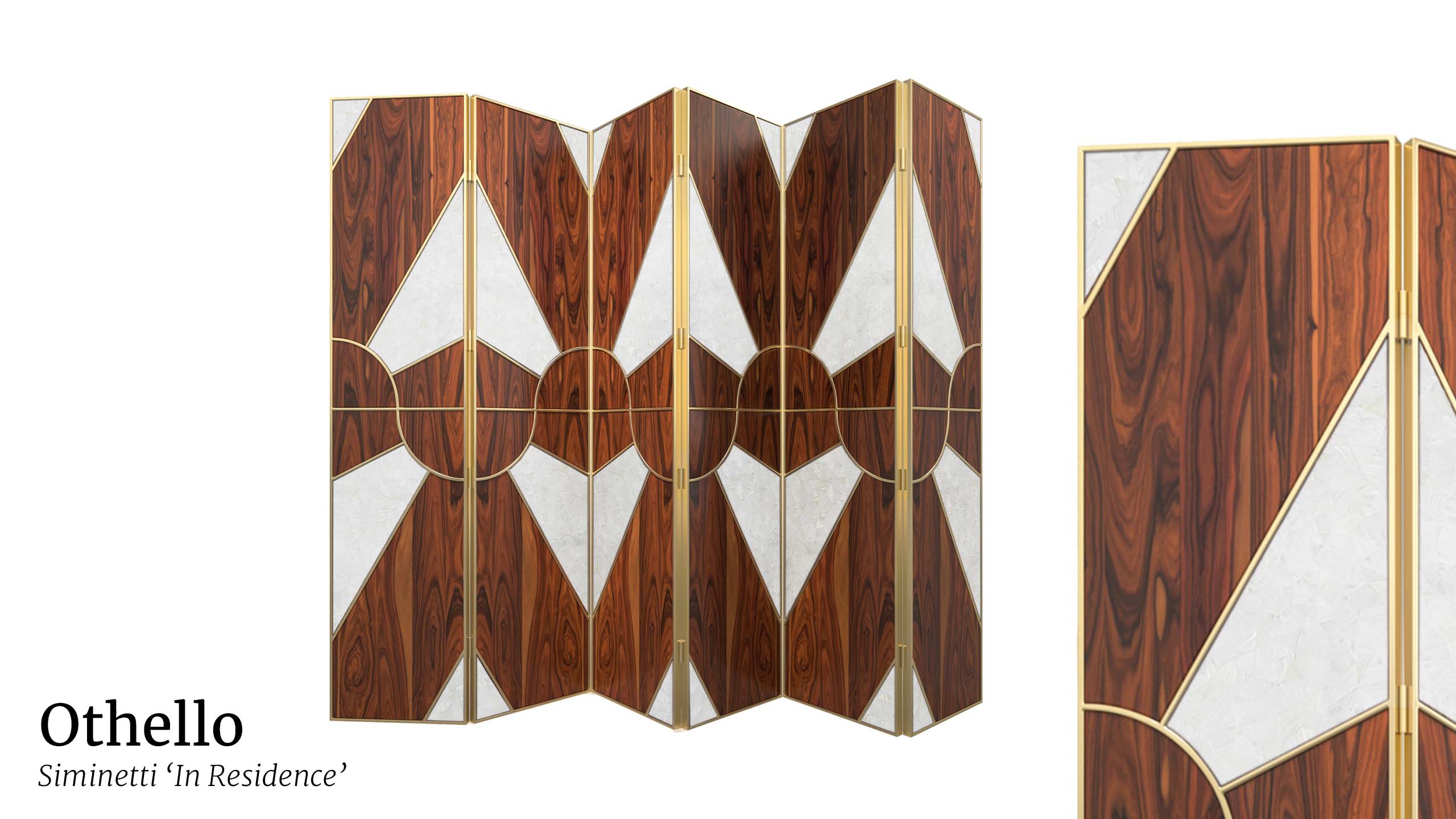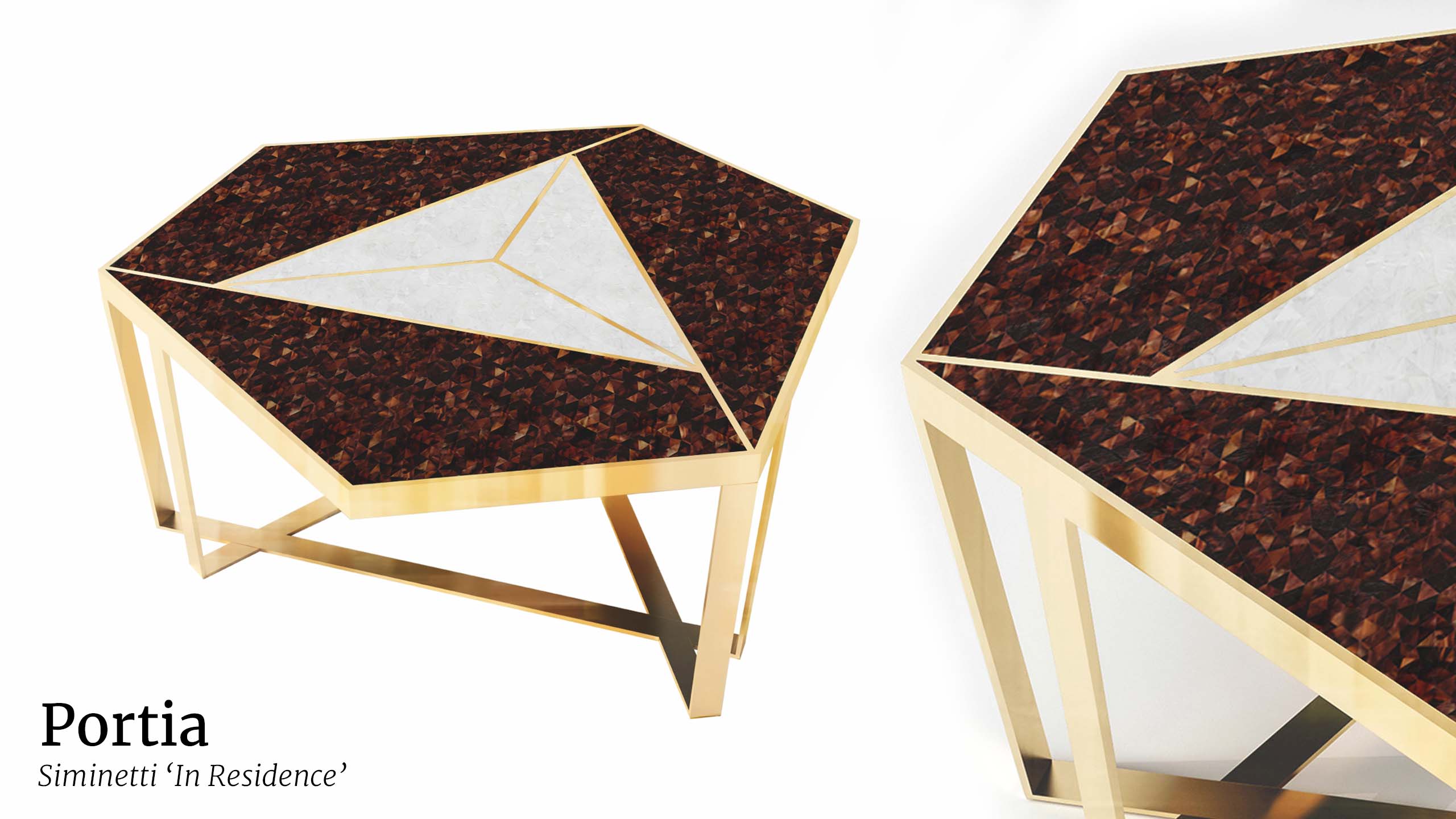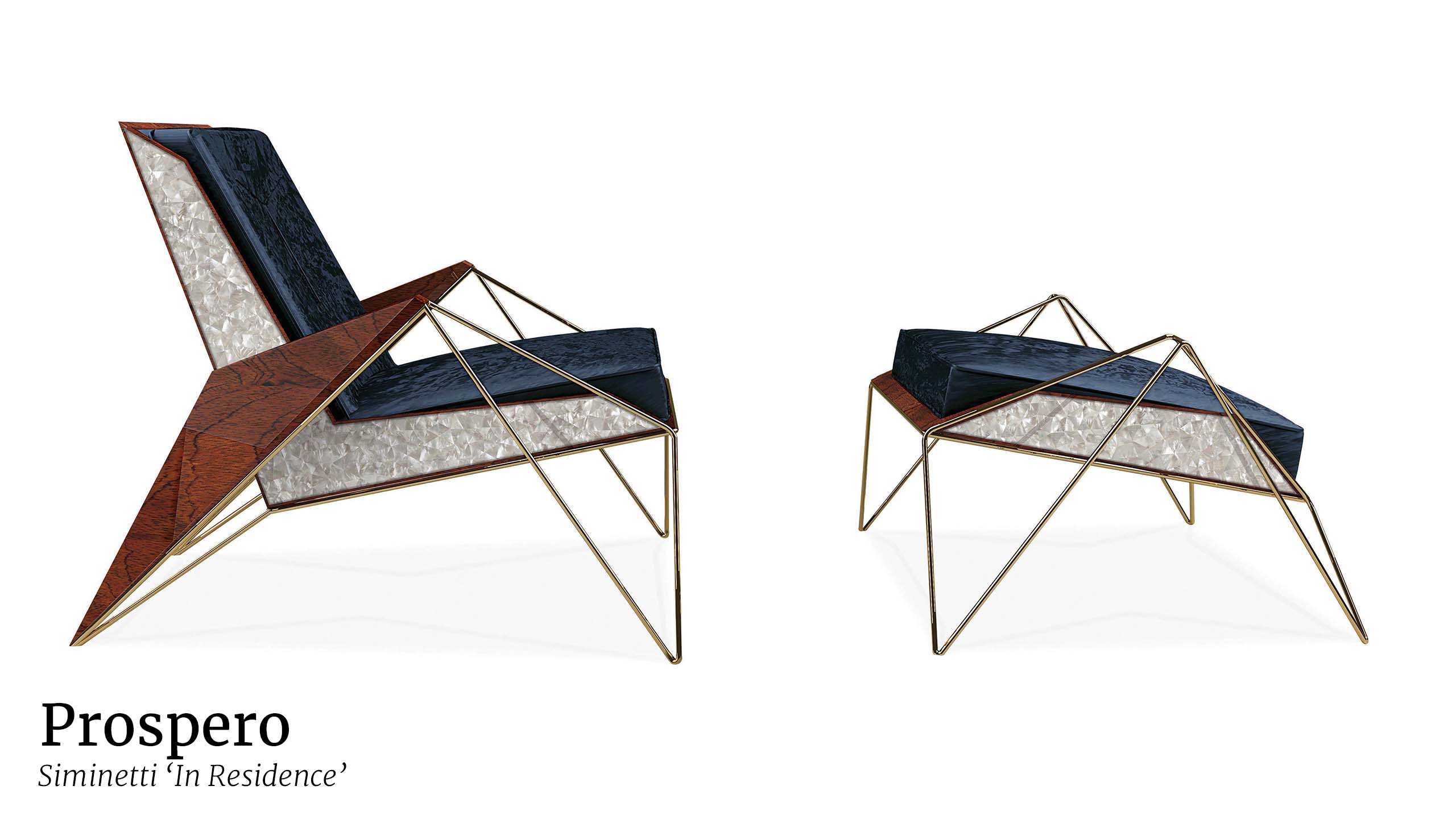Mother of Pearl Decoration; Past, Pearlescent, Future.
Introduction
Welcome to 2022 which will host exciting new ventures for Siminetti. We are writing this blog to explore the origins of mosaic decoration, the historic uses of Mother of Pearl, Siminetti’s current collections, and what the future holds for Mother of Pearl surface decoration. Mother of Pearl has a rich history routed in numerous cultures and a richer future with advancements allowing us to create even more inspiring designs.
Origins of Mosaic Decoration
The mosaic art form dates back centuries when Greek artisans began creating stunning works of art using stone, pebbles, porcelain and glass in the 5th century BC. It was in the 3rd century BC that Roman artisans began crafting mosaics in the forms which we now typically expect to see. These were made by hand using tesserae of glass, stone and ceramic as a form of decoration and story-telling. Under Roman ruling this classical artform was adopted and spread across the Mediterranean. Distinctive forms began to develop in regions across Europe. Although Italy is often perceived to be the originators of modern mosaics it wasn’t until the 1st century BCE that the Italians began decorating their walls, floors, baths, and more with a mixture of shells, coloured glass, pumice, and other materials. In the 1st century mosaics were mostly used for flooring opposed to wall coverings. This was because should a house collapse the floors were much less prone to damages. Many ancient mosaics were crafted with geometric and vegetal patterns. However, The most prestigious rooms would be adorned with storytelling. Featuring scenes from mythology or everyday life. Mosaics were commonly found in homes of successful aristocrats as a sign of wealth and opulence.
Roman mosaics, the form with which many are most familiar, have stood for centuries. Used to decorate their homes, temples and eating houses, with each mosaic crafted by hand, no two were ever the same.
Today one of the most famous mosaics is a visualisation of a dog discovered on a floor in Pompeii, Italy. Upon visiting Pompeii, founder Simon Powell found his passion for mosaics. Initially, this inspiration led to Simon founding the House of Mosaics Limited, 18 years ago. The company focused on bringing the beauty that Greek and Roman craftsman captured in their mosaics to a contemporary audience for residential & commercial projects internationally.
Below:
- Image 1, mosaic in Caesarea Maritima – the ancient roman city, Israel (Source: Envato Elements)
- Image 2, dog mosaic – Pompeii (source: BBC)
- Image 3, historic mosaic in Laodikeia, Denizli, Turkey (Source: unsplash)
Mother Of Pearl as A Form of Decoration Historically
Mother of Pearl is a natural material produced by shellfish and molluscs. Commonly known as Mother of Pearl, the technical name for the material is Nacre. Nacre has been a unique form of decoration for centuries: utilised by the early Egyptians to honour the most notable members of their communities. The Egyptians predominantly used Mother of Pearl to embellish silver items that were given as gifts to honour high-class members of society. Nacre was also used to decorate tombs, pyramids and decorative objects. Cleopatra, one of history’s most famous Egyptians was an avid fan of Mother of Pearl. During the Shang and Ming Dynasties nacre was used for fashion, furniture inlay and jewellery. The first known communities to use Nacre were the Native Americans, who would trade Mother of Pearl as a form of payment, or use it as part of their beads and jewellery creations.
Why do we use the term Mother of Pearl and not nacre? The naming is of simple origins and is a way to differentiate between the two forms nacre can be found in. Mother of Pearl is a shellfish or mollusc shell. The shells form over the life of the shellfish where thousands of layers of Nacre are slowly built over the top of each other. During the life of a shellfish, small pollutants can get trapped inside the shell. In this case, the fish will envelop the pollutant (often a grain of sand or similar) in layers of Nacre and create a pearl. Therefore both Mother of Pearl and pearls used for jewellery are made of the same material – Nacre. The Mother of Pearl naming is simply derived from seeing the shellfishes shell as the ‘Mother’ of the pearl inside.
The earliest examples of Mother of Pearl being used for home decor, come from the Shang dynasty, where the shells would be inlayed into wooden items of furniture, delicately carved and engraved. During the Ottoman Empire, Mother of Pearl become a popular choice of material for architecture and interior design. They used Nacre to craft thrones, decorate throughout palaces, inlay into doors and into window frames.
At first, Mother of Pearl was believed to only exist in three specific regions; the Persian Gulf, the Red Sea and the India-Sri Lanka coast. However, over the centuries, explorers and scientists have discovered beds around the world – both freshwater and saltwater – which contain a vast array of differing shellfish. Each variant creates Mother of Pearl with unique characteristics due to food, water temperatures and other specific environmental conditions. As popularity grew worldwide, Mother of Pearl would become a focal trade in France and England in the manufacturing of buttons and cutlery. The finest Mother of Pearl goods during this time were sold in the shops of Palais-Royal in Paris. Palestine became a central point for the production of Mother of Pearl items when French monks introduced the art to the people of Bethlehem who would use the material to craft religious objects and souvenirs to sell to travellers. It was in the late 19th century that Mother of Pearl reached its peak variation of uses. Nacre was used to create cutlery, snuff boxes, fans, card cases and buttons. Mother of Pearl buttons became a statement item for the most fashionable and wealthy of people.
The excessive farming of Mother of Pearl in the 17th through to 19th century saw many natural habitats once thriving with shellfish plummet. Now Mother of Pearl is supplied by large scale commercial pearl farms, which can grow specific shellfish in a controlled environment. Farming this way has several benefits. The farms provide an optimal environment for the shellfish to grow healthy and to a large size. The wild natural populations are protected from overfishing and predators. They are kept to one localised area removing the need for fishing vessels to journey out to sea producing pollutants and harming other aquatic life, and preventative actions can be taken to stop the fish from contracting deadly diseases which often plague the wild fish.
Below:
- Image 1, Mother of Pearl Sewing Nécessaire Circa 1825 (Source: 1stDibs)
- Image 2, Mother of Pearl inlaid into frame, engraved with religious scenes. (Source: V&A)
- Image 3, 15th century ornamental box of Korean origins (source: METmuseum)
- Image 4, screen made of wood decorated with lacquer and Mother of Pearl. Qing dynasty, Kangxi period (1662–1722) (source: METmuseum)
Siminetti’s Current Mother of Pearl Mosaics
In 2010 Simon Powell established Siminetti and switched to exclusively supplying the finest Mother of Pearl mosaics to interior designers and architects internationally. Siminetti’s mission has always been creating inspirational luxury surfaces that are crafted with passion, viewed with awe and are kind to the planet on which we live. This statement is throughout everything that the company does. Starting with using only the finest sustainably sourced Mother of Pearl, from suppliers which take care of the habitats, animals and people where they operate. You can see more on this in our sustainability statement.
In the mission of supplying the world’s most luxurious surface finishes, Siminetti started by offering a range of freshwater and saltwater Mother of Pearl mosaic tiles. The mosaic tiles were available in a vast mix of styles and colours and provided a level of luxury unparalleled by other available surfaces. Our Mother of Pearl surfaces are hand made by specialist artisans to ensure only the highest quality is acceptable. Today Siminetti offer 19 striking colours and 12 different styles of mosaics. Our collections offer something for every project. From the calming tones of our freshwater pearl mosaics to the striking tones of our Saltwater Pearl mosaics, we carefully select only the finest materials to ensure elegant, long-lasting finishes.
In 2019 Siminetti launched our collection of Decorative Wall Panels, offering the ultimate in surface finishes and produced from our finest Mother of Pearl. Today we currently offer four stunning collections, each handcrafted and designed by our teams of artisans, selected by many of the world’s leading designers and found in many of the world’s leading homes, spas, superyachts, planes and palaces.
Initially we launched three collections, the Classic, Signature, and Texture collections. All of the panels are handcrafted by expert artisans, placing individual tesserae one at a time onto an aluminium honeycomb backing. We use a honeycomb aluminium backing for several reasons. The aluminium provides the panels with fantastic rigidity. The panels can be produced with a gradual curve. The aluminium backing creates a waterproof solution ideal for wet areas, and it is also an incredibly light material. The lightness gives our decorative panels an advantage over traditional large format solutions that are often very heavy.
The minimalistic designs of the Classic collection will add elegance to any setting. Available in up to five different colours, there is a classic panel to suit any luxury hotel, restaurant, wellness facility or private residence. The Classics were Siminetti’s first development in Decorative Wall Panels, where our existing mosaic tiles were converted into this new form of luxury decoration.
Moving up from the Classics collection is the Texture collection. The collection features seven 3D textured Mother of Pearl Decorative Wall Panels. Use to create a statement feature wall or ceiling or add texture and depth into a flat room. Combining practicality with ease of installation, our textured wall panels offer a luxurious alternative to traditional tiles with the fast installation time and minimal maintenance requirements. Textured wall panels excel in retail settings, hotels, restaurants, and leisure areas. Where the tactile nature will intrigue and inspire visitors.
The final of our three initial collections was the Signature collection, and one of our most successful collections to date. The Signature collection is designed to fit with the most discerning of interiors, producing a sense of exclusivity unrivalled by man-made surfaces. The collection features 9 unique designs each available in several colourways with an option to fit any luxury setting. The main differentiating feature from the first two offerings is the intricate details of each design, pushing the boundaries of what is possible with Mother of Pearl.
The successful launch of our first three collections in 2019 prompted the development of the Seasons collection. This collection was developed in collaboration with surface designer Chrisanna McArthur of London. The brief was to produce a series of panels, inspired by nature with a contemporary feel. Chrisanna developed twelve striking designs which launched in January 2021. Our Seasons collection was shortlisted as an SBID product design awards finalist in 2021. All of the designs in the Seasons collection are available in two elegant colourways, Innocence highlights on a Bianco base or Golden Promise highlights on a Bianco base.
Since Siminetti’s inception, our ability to create bespoke solutions has inspired interior designers, architects, private individuals and hoteliers internationally. This began with creating patterns using our Mother of Pearl mosaics, then moving to intricate works of art with introducing our decorative panels. Working with our artisans, clients have the option of developing completely bespoke one-off solutions. Bespoke commissions include a wall mural depicting an ocean seascape, tabletop inlay and a hotel front logo inlay for the reception frontage. Explore our bespoke design process here.
Below:
- Image 1: Encircle Hotel Lobby front, Project in progress.
- Image 2:1500 Ocean Drive swimming pool, Bianco & Midnight Pearl mosaic. USA
- Image 3: St Andrews Links bar front. 25mm Dove Grey mosaic. Scotland
- Image 4: Natural 20mm Harmonie on the ceiling of the teachers lounge bar, The LaLit London UK
- Image 5: Golden Pearl Drop Kitchen backsplash. Lawler Design Private residential project USA
- Image 6: Gentle Earth Bathroom, Project by Sjartec Netherlands.
The Future Mother of Pearl Mosaics
The future of Mother of Pearl is a bright one. In 2022 we will launch our most impressive collection to date titled ‘In Residence’. Our In Residence collection will feature a series of signature furniture pieces incorporating unique hints of our Mother of Pearl combined with stunning fabrics, woods and metals. Initially the collection will include seven statement items with plans to build on the collection in the future.
Included in the collection will be: Ariel, Cordelia, Juliet, Ophelia, Othello, Portia, Prospero, Romeo, and Rosalind. Below are prelaunch images of each product mentioned. More details on the collection will be revealed closer to our launch. Please get in contact with a member of the team if you would like to receive updates on the launch!
